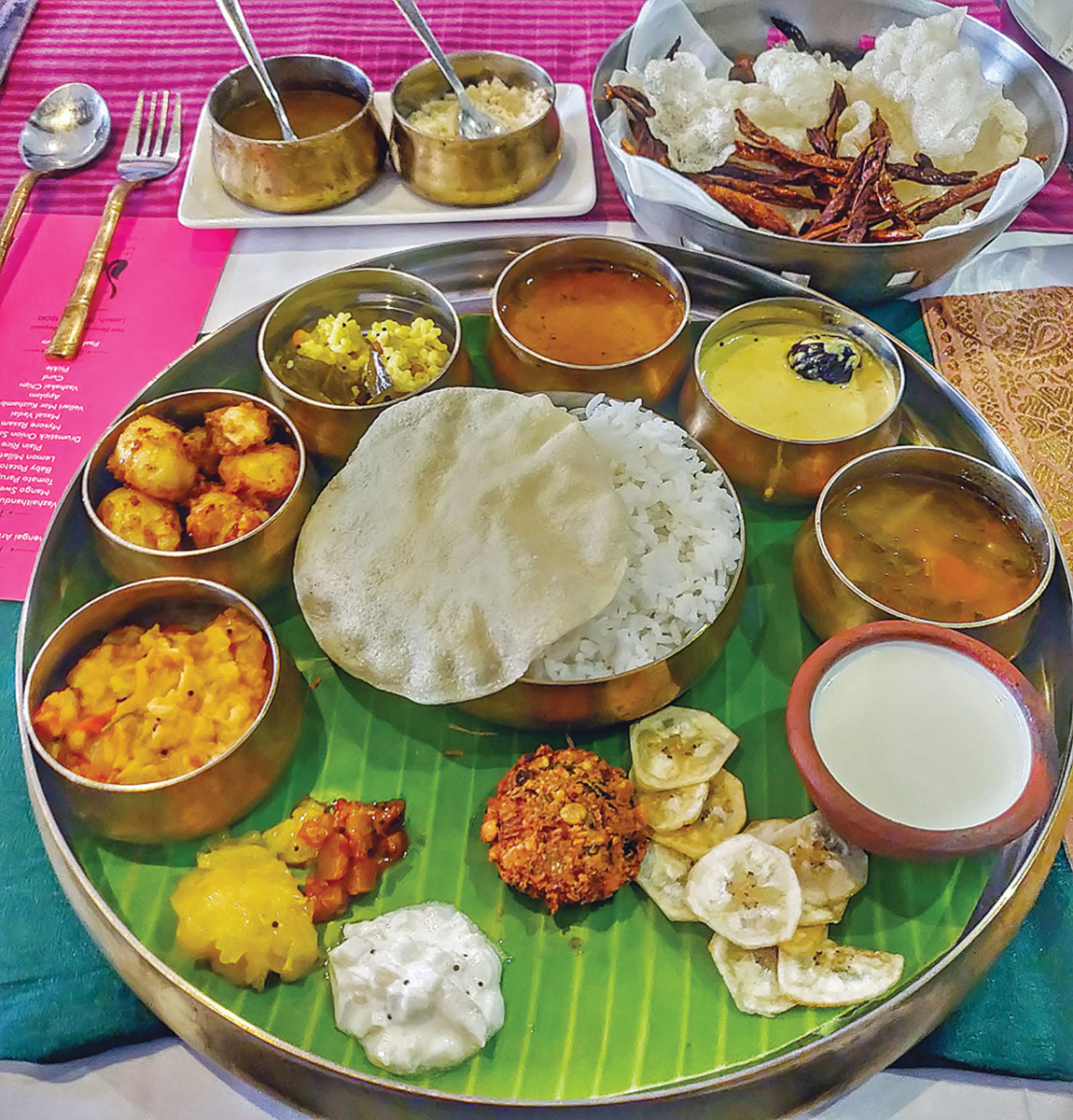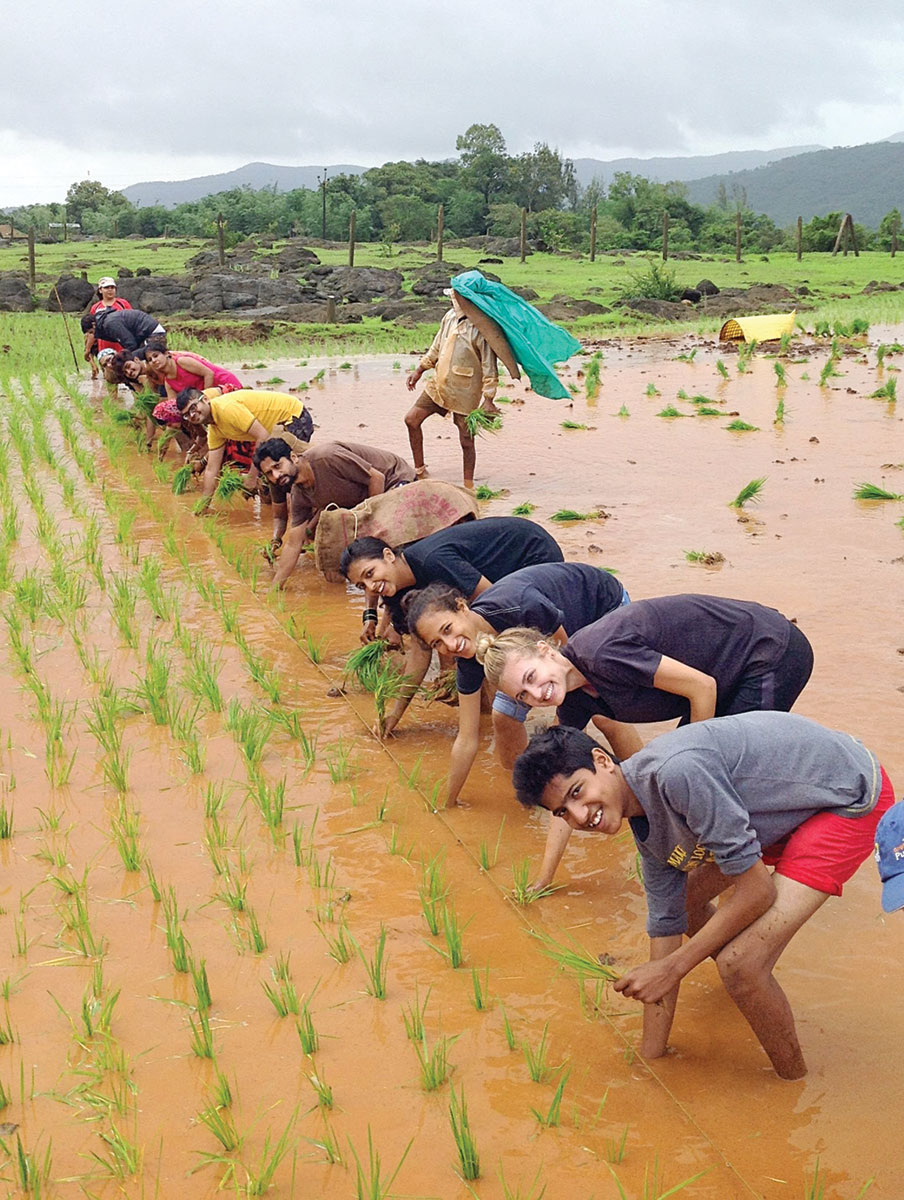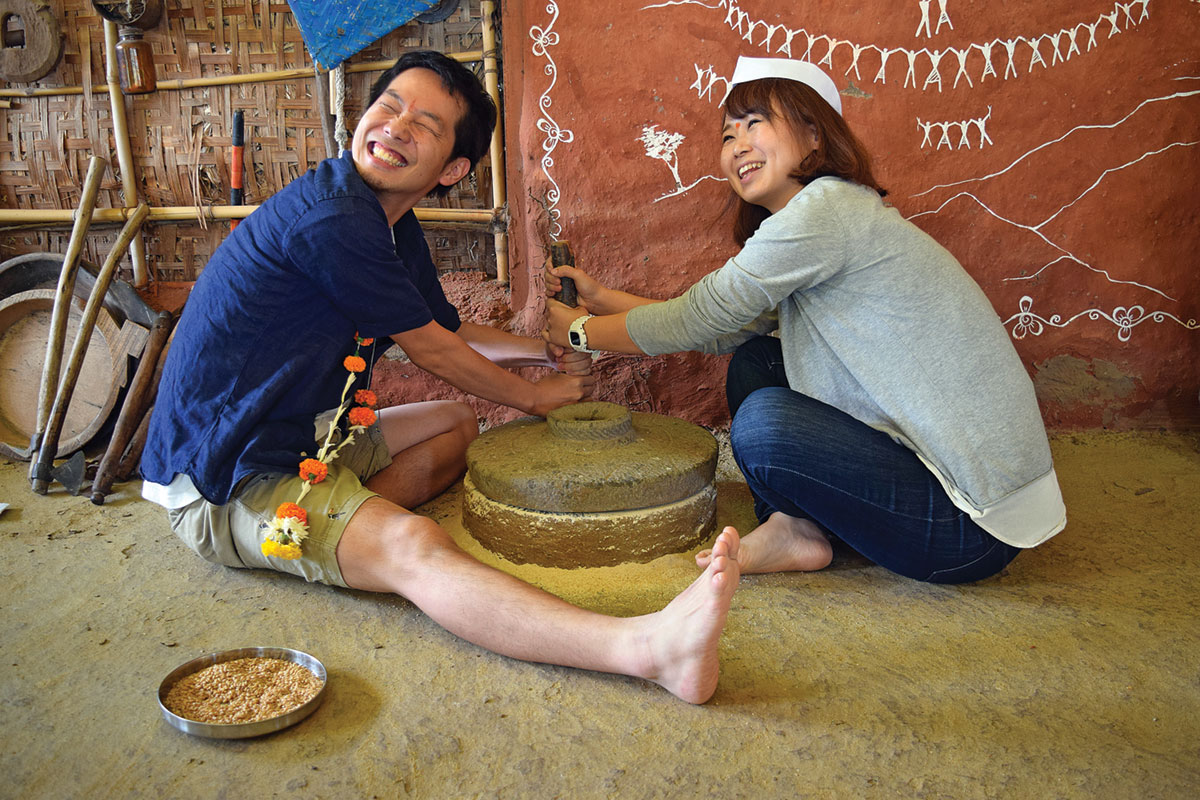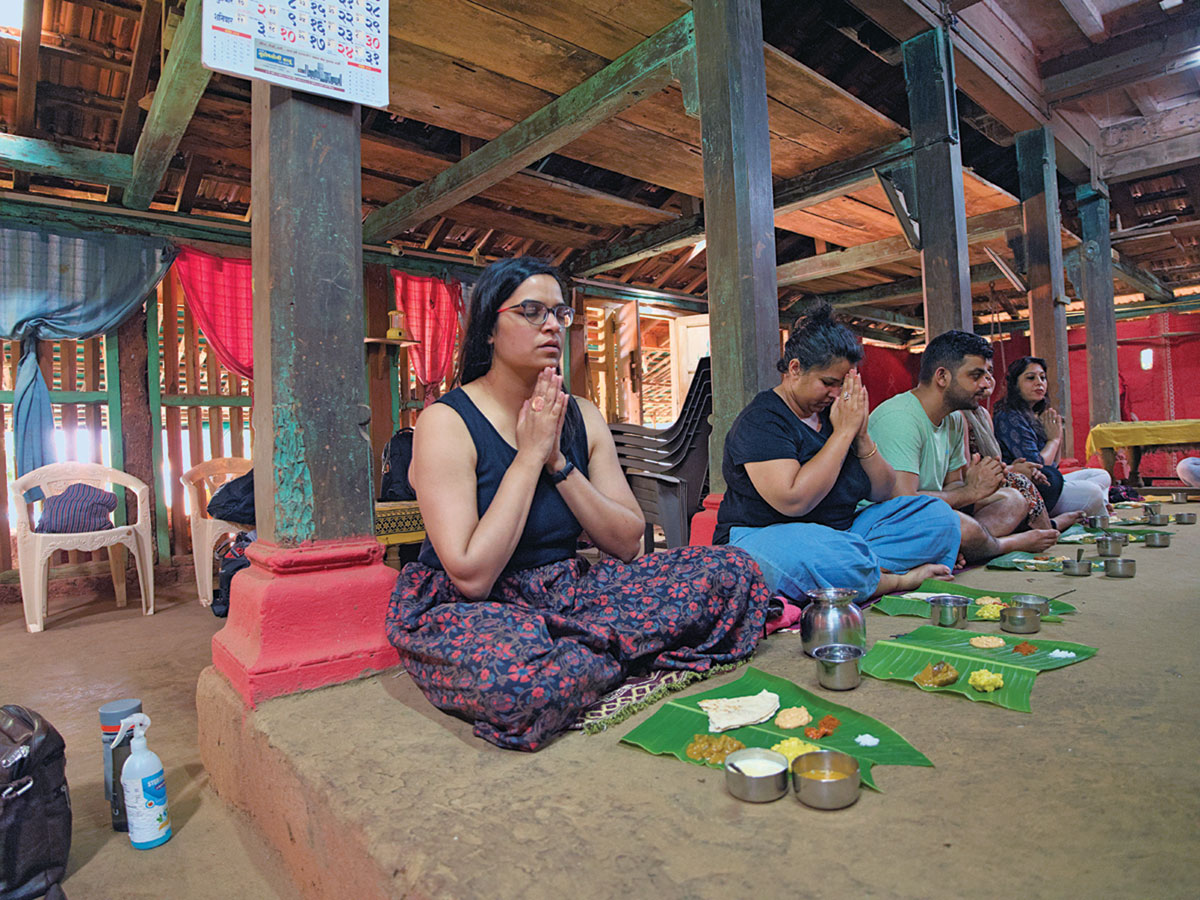Food For Thought
First published in Sanctuary Asia,
Vol. 42
No. 10,
October 2022
Culinary tourism, an upcoming sector of the tourism industry, presents a great opportunity to offer guests an authentic local experience. The best way to do this is to go back to our roots. In urban areas, food tourism can be economically beneficial to all stakeholders. But when it comes to rural areas or forest communities, can it become an economically viable livelihood, and can the local community be successfully involved, asks Jayesh Paranjape, a conservationist who organises specialised tours across India.
The meal was served on a banana leaf and I enjoyed it sitting in the padvi, (cow-dung-smeared verandah) of the house. As usual, I over-ate! I love food! Good, wholesome food.
That was years ago when I was fresh out of college on a road trip through the Ratnagiri district. I only stayed at people’s homes, largely distant relatives, who were life-long residents of Konkan’s quaint villages. Here is where I first enjoyed true farm-to-table experiences, thanks mainly to Bondre kaka, a distant, loving uncle who ditched a city job two decades ago to care for a home he had inherited. I recall it being a beautiful, traditional structure built in 1902 in a secluded village called Devghar. Even today the access is through farms, a forest patch and a stream and, when strolling through farms with him, kaka would pick produce and pluck wild herbs and fruit that caught his fancy. On our return, the gathered haul was handed over to my aunt kaku, who would whip up a simple meal from the freshly picked produce. The farm-to-table experience may be a novelty for city dwellers, but it’s the norm for every farming community across India.

A vegetarian thali at Svatma in Thanjavur. The serving is a mix of Tamil and Maratha cultures, representative of the temple town of Thanjavur. The great Chola temples are located in and around the town, which is also influenced by Maratha rule before the British colonised India. Photo: Jayesh Paranjape.
One of the main (in some cases, the only) attractions, and for me a key deciding factor when exploring new destinations, is the local cuisine. So, in Goa, a fish thali is as important as lounging on the beach, or exploring Old Goa’s churches. And a trip to Lucknow feels incomplete without tasting the famed tunde ke kebab, as would not visiting the Bada Imam Bara.
When I started organising professional tours back in 2011, the type of food served and experiences themed around food and local produce were consequently the first aspects I would plan. Culinary tourism was at a nascent phase in India, but with the passage of time has become the USP of the tours I conduct. As this tourism sector grows, professionals and academics put forth their own definitions of food tourism, culinary tourism and gastronomy tourism. A formal definition for food tourism was introduced by the World Food Travel Organisation in 2018, which explains the concept clearly and simply. “Food tourism is the act of travelling for a taste of place in order to get a sense of place” (2020 Food Travel Monitor). Food or culinary tourism means different things to different people, but broadly includes food tours, farm tours, food walks, and cookery classes. At the higher end, such excursions would involve dining at famed restaurants, or possibly visits to curated chef ‘s tables. According to the 2020 Food Travel Monitor report, global food tourism accounts for something like 25 per cent of added economic benefits for most destinations. What is more, the survey suggests that 53 per cent of all global leisure travellers prefer to travel specifically for food, which is why I believe that the growing sector of food tourism is here to stay in India.
Reviving Food Heritage
India is a melting pot of cultures and each culture prides itself on its gastronomic uniqueness. This rich heritage is at the core of why food-themed travel has become popular and why homestays and specialised boutique hotels have turned into such a vital sector for travel operators seeking to offer authentic, local experiential tours for small and large groups. From my experience and that of most professionals in my field, going back to our roots ensures that guests keep coming back and word-of-mouth reviews encourage others to follow suit.
I experienced this first-hand at Rustic Holidays, a homestay in the Konkan region of Maharashtra. Here I met Nitin and Shilpa Karkare who abandoned successful careers in Mumbai to move back to Nitin’s 200-year-old ancestral Maharashtrian home in Tural, Ratnagiri. Their homestay is set amidst lush green forest patches of Konkan and they grow their own food organically. Their guests are served homemade traditional vegetarian Maharashtrian food. And part of their meal includes seasonal wild produce including fruit such as mangoes, jackfruit, cashew nuts, bananas, and kokum, or butter nut. The Karkares also take pride offering their guests ancestral recipes, which had been lost because of low demand or the unavailability of ingredients.
25 PER CENT: Added economic benefits for a destination from global food tourism.
53 PER CENT: Percentage of leisure travellers who prefer to travel for food.
Around 250 km. south of Tural, in Goa, lies the Cajueiro Homestead, a farm stay dedicated to everything cashew. Spread over 25 acres in the Advoi village adjoining the Mhadei Wildlife Sanctuary, the property is a productive Horn of Cornucopia, with cashew, jackfruit, guava, mango, coconut, jamun, star fruit, and papaya trees cultivated organically. The host family offers traditional, rustic Goan meals whose ingredients are all sourced from their own farm.
Cashews are a source of pride and guests are offered experiences that reveal the different stages of the cashew harvest, how the fruit is transformed into niro (cashew apple juice), urrak (the single distilled alcohol made from the cashew fruit) and the more popular double distilled feni, a potent brew. Needless to add, the sit-down tasting sessions end up being unforgettable and very enjoyable first-hand experiences.
More than 1,400 species of wild plants can be foraged across India (Ray A., Ray R. and Sreevidya E.A. (2020) How Many Wild Edible Plants Do We Eat – Their Diversity, Use, and Implications for Sustainable Food System: An Exploratory Analysis in India). A word of caution: foraging is not easy and can go terribly wrong. Luckily, we have food crusaders who have taken it upon themselves to educate enthusiasts about foraging the right weeds, flowers and fruits that are edible.
To the north of Goa in the Raigad district of Maharashtra, farmers get together at the beginning of the harvest season to celebrate in a unique way – a popti party. The seasonal and hyper-local popti party is primarily celebrated by farmers of the agricultural community of western Maharashtra. Popti is a one-pot dish made using vaal or pavta (field beans), seasonal vegetables, some basic spices, and wild herbs. The tradition has been around in the Raigad district for decades. Here, farmers must inevitably spend nights in the fields to protect their crops from the wild animals next to which they live. Popti parties are still largely undiscovered, but in recent years their popularity has been rising among food and travel enthusiasts from cities as distant as Mumbai, Pune and Thane.

Within agritourism, a trending concept is participating in planting rice with the farmers. For city-goers, this is a therapeutic activity and a great chance to connect with the soil. Here, participants are learning the technique of planting rice in a straight line, which is directed using a guide rope. Photo: Jayesh Paranjape.
Foraging for Wild Greens
Foraging means gathering edible wild plants. Our ancestors were foragers, and this food knowledge was passed on to the next generations, generally without documentation. In fact, for some communities in India, foraging is still a way of life. Indians have been proudly foraging wild greens much before Noma, the three-Michelin-star restaurant based in Copenhagen, Denmark, made it globally popular and chic in 2003. According to a study conducted by the Centre for Studies in Ethnobiology, Biodiversity, and Sustainability (CEiBa), India, 1,403 species of wild plants from 184 families can be consumed across India.
Foraging is traditionally associated with rural and tribal communities. However, since the lockdown, with time on their hands and isolation becoming commonplace, people began experimenting and the practice is gaining real popularity among the food cognoscenti. But here I would offer a word of caution: foraging is not easy and can go terribly wrong, particularly if attractive mushrooms are gathered together with other potential food plants. Fortunately, a growing tribe of ‘food crusaders’ have taken it upon themselves to educate enthusiasts about foraging safe edible weeds, flowers and fruits. Ecologist Nina Sengupta, for instance, conducts regular edible ‘weed-walks’ in Auroville near Pondicherry, and even offers participants local recipes. In the bustling capital of Delhi, Kush Sethi has been organising personalised forage walks in, believe it or not, the famous Lodhi Gardens. At the end of the walk, participants are rewarded with a delicious meal prepared with the plants they foraged!

A Japanese couple milling grain on a grinder called jaata in Marathi at The Parasher Agri and Culture Tourism Farm near Junnar. Here tourists are offered an opportunity to experience village life through local food, visits to nearby farms, listen to powada (folk music), and actually learn to make bhakri themselves. Photo: Shweta Ramappa.
Popti Party
A clay pot is lined with bhamburdi leaves, filled with beans, and seasoned with rock salt and ajwain (carom seeds). The pot is then sealed, placed upside down, covered with hay, dried coconut stems and leaves, and then lit. After around 30 minutes, the pot is opened and the leaves are discarded, and the smoky beans are enjoyed as an evening snack. While this is the original recipe, marinated chicken, eggs, and other vegetables are optional and a later addition.
Pandemic Innovators
During the pandemic, tourism-dependant states suffered major financial losses. Uttarakhand in particular was devastated and thousands rendered unemployed when tourism shut down. Dehradun-based NGO Kalap Trust and Tons Trails launched an initiative to sell apples grown in the Tons Valley. They first identified apple farmers who had been adversely impacted, then booked apple orders in advance through social media and thus helped farmers who faced ruin. By the end of the apple season in October 2020, over 25 tonnes of apples had been sold and a hugely successful initiative was created as a one-of-its-kind Apple Trail, involving a tour of the picturesque apple orchards of the Tons Valley. This four-day experience allows visitors to meet and interact with local farmers, experience the life of locals, and learn how apple orchards are run. Almost every visitor has said that picking and then eating the apples they picked was an experience to cherish. At the time of writing this, the Kalap Trust and Tons Trails support as many as 37 villages whose economic security has been shored up by tourism.

A simple home-cooked meal prepared by Bondre kaku who, along with her husband, runs a B&B at Devghar village in Maharashtra. They conduct nature camps for school kids from the surrounding villages and towns. The produce is picked from their farm, grains are milled locally and all the food is cooked on firewood. Photo: Murtuza Chhil.
Can Food Tourism Provide Alternative Livelihoods?
Food tourism and agritourism are inextricably linked. In urban areas, food tourism can be economically beneficial to all involved – restaurants, homestays, hotels, and experiential travel companies. For rural areas and forest communities, where agriculture is the mainstay, food or agritourism could be turned into an economically viable livelihood, with the fullest involvement of the local community. The tourism sector already has several initiatives that provide alternative livelihoods to forest communities, or people living on the periphery of Protected Areas. The Last Wilderness Foundation, for instance, is doing exemplary work in and around the Panna, Kanha, and Bandhavgarh Tiger Reserves.
As of now, however, despite their immense knowledge of their forest, wild plants and traditional food, the tribal and forest-dwelling communities are seldom involved in either the food or agritourism sectors and we are hopeful that this situation will soon change with the help of government agencies, hotels, resorts, tour operators and NGOs working to deliver dignity and sustainable livelihoods to the tribal and forest-dwelling communities living next to Protected Areas, whose future we all wish to secure.
Jayesh Paranjape is the founder of The Western Routes, a Pune-based travel company that focuses on culinary and cultural tours across India. Jayesh curates food trails across the country to popularise the concept of culinary tourism. To know more visit www.thewesternroutes.com.





